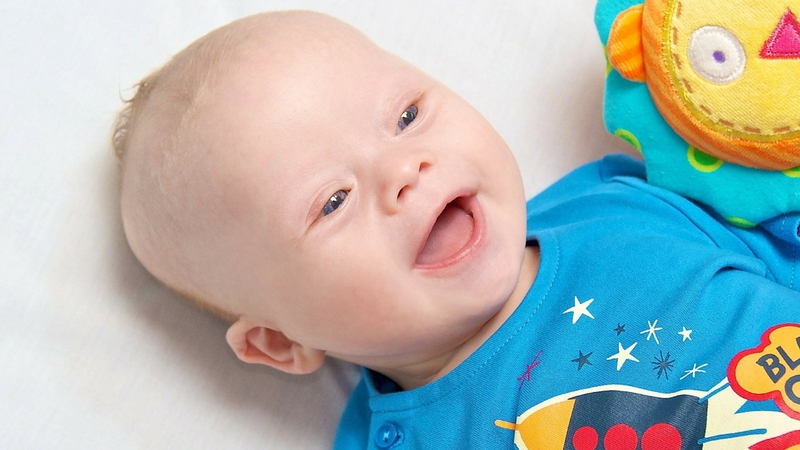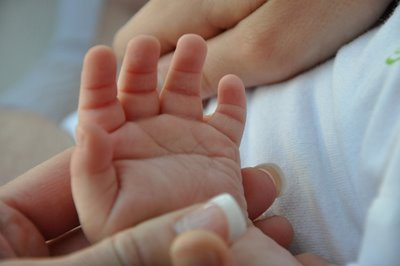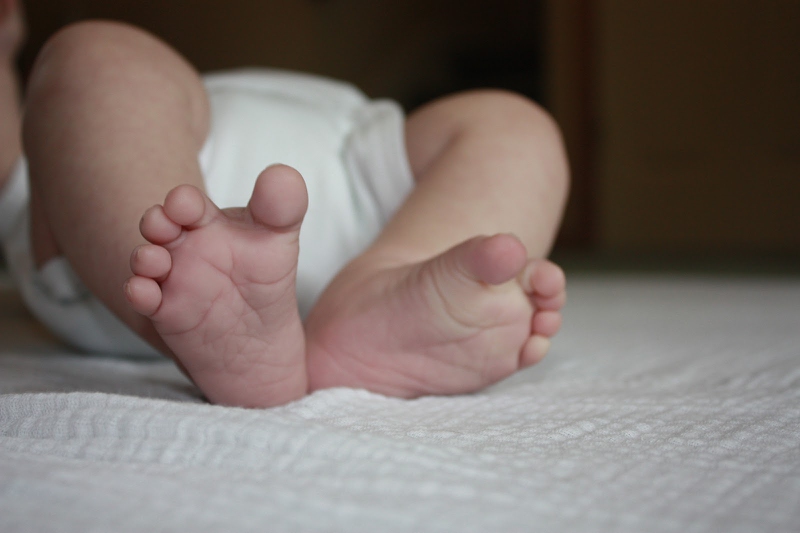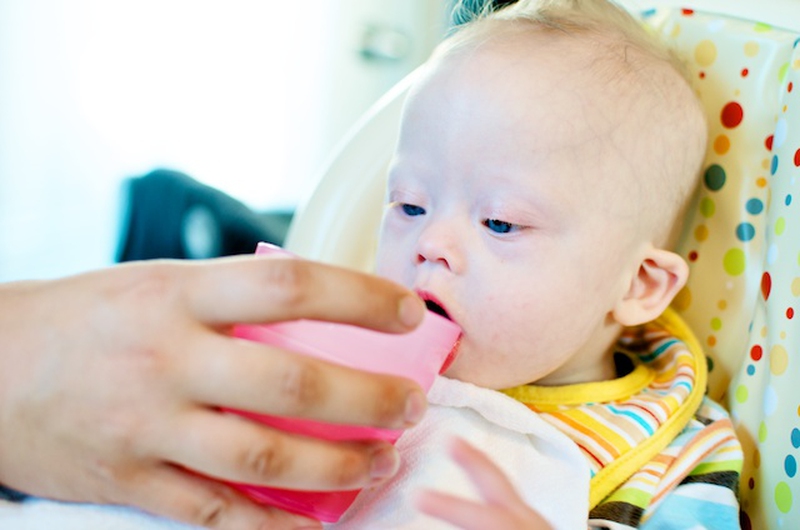Down syndrome is a genetic disorder faced by 1 out of every 700 infants born in US. Normally, a baby tends to have 46 chromosomes in each cell. DS happens as a result of incomplete separation of one of her chromosomes at the time of fertilization. And the baby happens to have an extra copy of chromosome 21, in all or just in few of her/his cells, making it 47 in total, this is where the problem starts and parents observe different signs of down syndrome in infants.

Why Is It a Problem?
It’s a concern because it may affect the whole life of your baby. It affects the growth of an infant intellectually and physically. It ranges from moderate to severe; case varies from person to person. Infants with down syndrome grow slowly as compared to other babies. They tend to have sluggish motor development (ability to use muscles). As a result, they take time in sitting, crawling and walking. Besides this, all through their life, they remain at the risk of various other physical weaknesses. You can’t expect them to act and behave like other babies of their age. Here are a few medical problems that an infant with DS may develop by the time. Each individual may have one or more of them but not all of them.
Heart defects
Thyroid disease/hypothyroidism
Visual problems
Hearing impairment
Slow language development
Leukemia
Abnormality of gastrointestinal tract
Alzheimer disease (in adulthood only)
Symptoms of Down Syndrome in Infants
Flat Facial Profile
This is one of the most common DS symptoms in infants. Almost all the infants share the same flat facial profile, especially when you look from the side, you barely find any curve of nose bone, even the cheeks seem to be hanging on the face. It’s because of the poor tone of facial muscles. Small nose, with a flat bridge, may cause trouble in breathing. That’s why you’ll find these infants with an open mouth most of the time.
Tongue Sticking Out
Infants with DS have their tongue sticking out for most of the time as these infants have long tongues and small mouths. That’s why holding the tongue inside the mouth is not easy for them. Their lips are thinner in size as compared to a normal baby.
Almond Shaped Eyes
Unlike the eyes of a normal and healthy infant, babies with DS tend to have narrow eye slits with fissures (outer corner) turned upward, abnormally. Besides this, the inner side of their eyes carries a fold of skin, known as epicanthal fold.
Brushfield Spots on Iris
These are tiny white spots that normally appear on the corners of iris (circular structure of eyes). These spots are also termed as ‘stars’.
Their Birth Weight
There have been several cases where infants with DS are born with a below average weight and height. This is not one of those essential signs of down syndrome in infants. Still there are many infants with DS who are born with a normal weight but by the time they grow, their growing speed slows down and they look smaller than the normal kids of their age.
Single Simian Crease
About 45% infants with down syndrome are born with a single simian crease in their palms. It’s one of the major signs of DS that may confirm the syndrome. Hypotonia (poor muscle tone) is the main cause of this single line in palm, rather than three main lines. Hypotonia refrains the baby from having a tight fist when he/she is in the womb.
Shorter Limbs
These infants have arms and legs smaller than an average size. Even their hands and feet too are small in size. Looking at their hands closely, you’ll see broader palm area and small-sized fingers. Most interestingly, most of these infants have only one flexion furrow in their fifth finger instead of two.
Poor Muscles Tone/Hypotonia
Infants affected by DS come with a very loose and limp muscle tone. They come with an excessive flexibility in their body. They seem to have no control over them and they simply can’t hold their forms. When you hold them in your hands, they feel like slipping out of your hands. They look even stranger in a laid down position and their limbs seem to be falling out in the sides.
Gapped Toes
Infants with DS have got a noticeable space between the first toe (big one) and the one next to it.
Their Neck!
Looking at the neck of the infant, you would see that it is shorter than the normal size. Not just this, the back of the neck comes with excess skin in the form of lose folds. These folds usually diminish as the baby grows up.
Their Head and Ears
Their head shape seems to be different. Head is smaller in size and flatter at the back. Besides this, their ears too are smaller with fold over tops.
Weaker Reflexes
These infants are reported to have weaker reflexes than an average healthy child. That would make them cry in comparatively meagre sound.
What to Do?
If doctor has confirmed 6 to 10 of these signs of down syndrome in infant, that means your baby has down syndrome. There is no proper cure for this disorder. But still there are things that parents should do to ensure a better life for the baby:
Within the first few months after birth, infants should have echocardiogram. It detects the heart health. If the baby has minor defects, he can be treated medically. But if the test indicates something serious, the infant would have to undergo a surgical procedure.
Get help from some early intervention programs. Such programs provide different therapies (speech therapy) for better physical and mental growth.
Parents have to be extra vigilant and must keep an eye on different aspects of their health and growth. Keeping a regular medical follow-up is essential.
As the baby grows up, get him involved in various physical activities to prevent an abnormal weight gain and obesity.
Most of all, infants with DS need the love and attention of the people around them.






View All Comments /Add Comment